При завершении работы Windows 11 или Windows 10 некоторые пользователи могут столкнуться с сообщением «DDE Server Window Это приложение не позволяет выключить компьютер», в некоторых случаях сообщение исчезает само, иногда — нет. При нажатии кнопки «Все равно выключить» поведение может отличаться: иногда завершение работы происходит, иногда — ошибка приложения explorer.exe.
В этой инструкции подробно о том, как решить проблемы с выключением компьютера из-за DDE Server Window и чем они могут быть вызваны.
Способы исправить сбои завершения работы из-за DDE Server Window

DDE Server — сервер Dynamic Data Exchange, одна из технологий, позволяющая приложениям Windows обмениваться данными. Сообщения о DDE Server Windows при завершении не говорят о том, что на компьютере вирус или что-то вредоносной — обычно дело в сбое DDE по тем или иным причинам.
Простые способы решения проблемы
Для начала несколько простых методов решить проблему завершения работы Windows 11 и Windows 10 с сообщением о том, что DDE Server Window не позволяет выключить компьютер:
- Если проблема возникла однократно, можно вернуться в Windows и перезапустить проводник (это можно сделать в диспетчере задач, выбрав процесс Проводник или explorer.exe и нажав «Перезапустить задачу», после чего попробовать выполнить завершение работы снова.
- Перед завершением работы закройте все приложения, с которыми вы работали и имеющие несохраненные данные.
- Проверьте, выполняется ли выключение не через меню «Пуск», а другими способами: например, нажмите правой кнопкой мыши по кнопке «Пуск» и используйте опции завершения работы, доступные там, либо, находясь на рабочем столе, нажмите клавши Alt+F4 и выполните завершение работы с помощью появившегося диалогового окна.
- Также вы можете выключить ваш компьютер с помощью командной строки, базовый вариант команды для этого —
shutdown /s /t 0
- Если проблема появилась после недавних изменений системных настроек, драйверов, установки ПО, можно использовать точки восстановления системы на дату, когда всё работало исправно.
Сторонний антивирус
Среди наиболее частых причин постоянной невозможности выключить компьютер из-за DDE Server Window — конфликт со сторонним антивирусом. Проверьте, происходит ли завершение работы, если полностью отключить антивирус (а лучше временно удалить его).

Если это помогло, при этом вам необходимо использование именно этого антивируса, убедитесь, что устанавливаете последнюю доступную версию, а Windows также обновлена — это может решить проблему.
Повреждение системных файлов
Следующая возможная причина — повреждение тех или иных системных файлов, выполните их проверку и исправление, для этого:
- Запустите командную строку от имени администратора.
- По порядку используйте следующие две команды
DISM.exe /Online /cleanup-image /restorehealth sfc/ scannow
Учитывайте, что первая из них может «зависать», это нормально, наберитесь терпения.
Если ошибки были найдены и исправлены, проверьте была ли решена проблема.
Редактор реестра
Перед использованием этого способа рекомендую создать точку восстановления системы.
Следующие изменения параметров реестра могут помочь устранить сбой DDE Server Window:
- Нажмите правой кнопкой мыши по кнопке «Пуск», выберите пункт «Выполнить», введите regedit и нажмите Enter.
- Перейдите к разделу реестра
HKEY_LOCAL_MACHINE\SYSTEM\CurrentControlSet\Control
- Дважды нажмите по параметру WaitToKillServiceTimeout и измените его значение на 2000
- Перейдите к разделу реестра
HKEY_CURRENT_USER\Control Panel\Desktop
- Нажмите правой кнопкой мыши в пустом месте правой панели редактора реестра и создайте новый параметр DWORD с именем AutoEndTask
- Дважды нажмите по созданному параметру и измените его значение на 1
После этого можно закрыть редактор реестра и попробовать завершить работу как обычно.
Если предыдущие подходы не помогли решить проблему, несколько дополнительных вариантов, которые могут помочь:
- Если у вас включено автоматическое скрытие панели задач — попробуйте отключить его: по некоторым отзывам причина проблемы оказывается именно в этом. Для этого можно нажать правой кнопкой мыши по панели задач, выбрать пункт «Параметры панели задач», а затем снять отметку с «Автоматически скрывать панель задач» в разделе «Поведение панели задач».
- Если вы этого ещё не сделали, установите доступные обновления Windows — это может решить проблему.
- Проверьте, происходит ли завершение работы исправно если выполнить чистую загрузку Windows. В случае, если при этом всё в порядке, причину следует искать в сторонних программах, работающих в фоновом режиме или в сторонних службах.
- Попробуйте отключить быстрый запуск Windows 11/10
- Иногда проблема может возникнуть из-за сбоев профиля пользователя: можно проверить, выполняется ли завершение работы исправно, если создать нового пользователя и выполнять завершение работы, зайдя под ним.
Буду благодарен, если ниже в комментариях вы сможете поделиться тем, какой из способов сработал в вашем случае и помог устранить проблему «DDE Server Window Это приложение не позволяет выключить компьютер».
Как включение, так и выключение компьютера представляет собой поэтапную процедуру, в ходе которой последовательно завершаются сначала пользовательские, а затем и фоновые системные процессы. Если на этом этапе произойдет сбой, система не сможет перейти к следующему шагу. Примером тому является сценарий, при котором появляется сообщение «DDE Server Window. Это приложение не позволяет выключить компьютер» при выключении устройства – неполадка, столкнуться с которой может любой пользователь.
Серьезной ее не назовешь, решается она в большинстве случаев успешно. Как именно, разберем ниже, но перед тем позвольте пару слов о том, что же представляет собой этот самый DDE Server Window.
DDE Server – это технология, позволяющая установленным на одном компьютере приложениям обмениваться друг с другом данными по схеме клиент-сервер. Соответственно, когда в работе технологии происходит сбой, система выдает сообщение – в рассматриваемом примере окно DDE Server Window. Но перейдем к нашим решениям.
Причины проблемы могут быть разные, но наиболее вероятной из них является активность какого-то процесса, который почему-то еще не успел завершиться. Поэтому, выждав минуту, нажмите в окне сообщением кнопку «Все равно выключить». Если при этом появится ошибка explorer.exe «Инструкция обратилась по адресу…», нажмите «Отмена», вернитесь в Windows и перезапустите Проводник из Диспетчера задач, а затем попробуйте завершить работу компьютера в штатном режиме.

Если это не сработает, выполните в окошке Win + R или командной строке команду shutdown /s /f /t 0 – она завершает процессы принудительно.

С той же целью вы можете использовать меню завершения работы ПК, вызываемое нажатием клавиш Alt + F4.

В реестре Windows имеется параметр, позволяющий уменьшить время ожидания завершения системных служб. Если какая-либо служба не завершилась в течение заданного времени, система завершит ее работу принудительно. Откройте редактор реестра командой regedit, перейдите в раздел HKLM\SYSTEM\CurrentControlSet\Control и измените значение параметра WaitToKillServiceTimeout в меньшую сторону, скажем, до 2000 миллисекунд.

Также вам нужно будет создать в разделе реестра HKCU\Control Panel\Desktop DWORD-параметр AutoEndTask и установить в качестве его значения 1. Этот параметр включает принудительное завершение процессов, которые не завершили свою работу в положенное им время.


Предложенные выше решения – основные, приведенные ниже – дополнительные, но и они могут оказаться эффективными.
● Если у вас установлен сторонний антивирус, отключите, а еще лучше удалите его. И поверьте, этот пожиратель ресурсов не особо-то и нужен, а для защиты ПК вполне достаточно штатного Защитника.
● Установите последние обновления Windows или напротив, удалите их, если неполадка появилась после апдейта.
● Проверьте систему на предмет повреждении ее целостности. Напоминаем, сделать это можно средствами PowerShell, выполнив одну за другой команды dism /online /cleanup-image /restorehealth и sfc /scannow.
● Отключите элементы автозагрузки в Диспетчере задач, также вы можете попробовать выполнить так называемую чистую загрузку, то есть перезагрузив компьютер с отключенными сторонними службами в оснастке «Конфигурация системы».
● Отключите функцию быстрого запуска.
● Если на компьютере имеется другой пользователь, переключитесь на него (не забыв выйти из ранее используемой учетной записи) и выключите компьютер. Отсутствие ошибки с определенной долей вероятности укажет на проблемы в профиле пользователя – используйте для выключения ПК альтернативную учетную запись.
Наконец, если ошибка появляется регулярно, при этом ее появление вы интуитивно связываете с установкой программ, драйверов, изменением конфигурации или имевшими место сбоями, откатите систему к точке восстановления, на момент создания которой в работе Windows не возникало проблем. А на этом пока все.
Пользователи Windows 10 и 11 жалуются, что у них не получается нормально выключить ПК из-за приложения DDE Server Window. На экране завершения сеанса при этом висит сообщение «это приложение не позволяет выключить компьютер». По нажатию на кнопку «Все равно выключить» проблема решается либо усложняется появлением различных ошибок системного Проводника (explorer.exe).
Что такое DDE Server Window и почему не закрывается
DDE Server Window – это окошко сервера динамического обмена данными (Dynamic Data Exchange) между приложениями ОС Windows. Причин на то, почему DDE не закрывается при выключении ПК, существует несколько:
- системный Проводник Windows забаговал, завис;
- стороннее ПО препятствует завершению работы DDE;
- повреждены системные файлы, относящиеся к DDE;
- баги и ошибки в работе ОС Windows.
Есть и другие причины, но вышеуказанные – самые распространенные.
Как закрыть DDE и выключить ПК
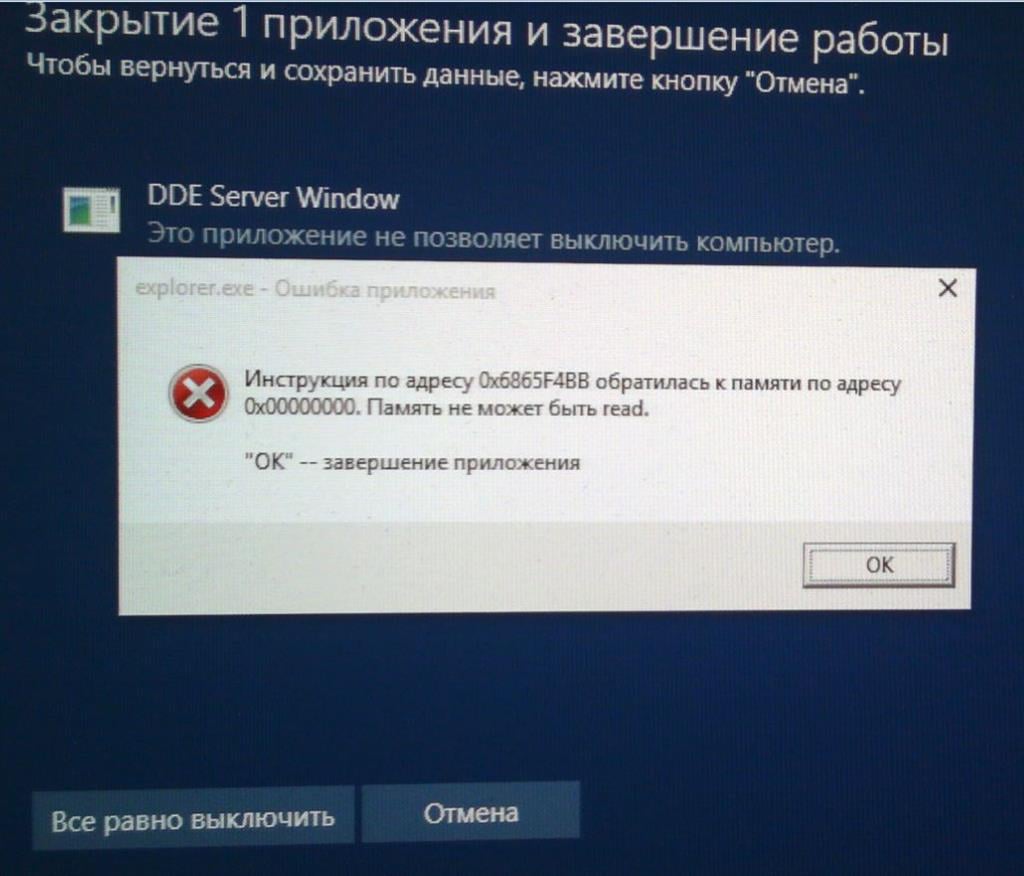
Проблемы с DDE устраняются относительно просто; есть несколько решений, которые помогут перезагрузить ПК.
Решение №1 Перезапуск Проводника
Ошибки DDE Server Window часто возникают из-за системного Проводника, который по той или иной причине завис или забаговал. Перезапустить Проводник можно через Диспетчер задач:
- Кликните ПКМ на панель задач и выберите «Диспетчер задач».
- Найдите в списке задачу «Проводник», кликните на нее ПКМ и выберите «Перезапустить».
- Подождите возобновления работы Проводника и выключите ПК.
Если все прошло нормально, то проблема заключалась в неправильно работающем Проводнике. Если ситуация повторится в будущем, то вы знаете, что нужно делать.
Решение №2 Отключение фонового ПО
Некоторые программы могут, в теории, препятствовать нормальному выключению ПК. Закройте все программы, работающие на фоне ОС, и попробуйте выключить компьютер еще раз. Рекомендуем обратить внимание на установленные антивирусы, т.к., если верить сообщениям в сети, они могут вызывать проблемы при завершении рабочего сеанса Windows. Также стоит отключить все оверлей-приложения.
Решение №3 Восстановление системных файлов
Повреждение системных файлов может приводить к тому, что DDE Server Window начинает мешать нормальному выключению ПК. Такие файлы нужно восстановить встроенными средствами.
- Нажмите комбинацию WIN+X и выберите «Терминал (администратор)» (или Командную строку с теми же правами).
- Выполните в консоли две команды: sfc /scannow и DISM /Online /Cleanup-Image /RestoreHealth.
- Закройте Терминал после выполнения команд и выключите ПК.
Если поврежденные файлы были найдены и исправлены – компьютер выключится.
Нестандартные решения для DDE Server Window
Существует ряд нестандартных методов, которые, также в теории, могут исправить проблему DDE. Их эффективность мы гарантировать не можем, и некоторые из них покажутся вам странными, но попробовать стоит.
- Запустите установку отложенных обновлений для Windows.
- Отключите функцию быстрого запуска Windows. Для этого нужно открыть «Панель управления» (через WIN+S), перейти в разделы «Электропитание» → «Действия кнопок питания». Уберите галочку с опции «Включить быстрый запуск (рекомендуется)».
- Отключите автоматические скрытие панели задач Пуск, если оно активно.
- Измените некоторые из настроек своей учетной записи Майкрософт. Также можно создать локальный аккаунт и перезагрузить компьютер из под него.
DDE Server Window редко доставляет проблемы при выключении ПК. Но если все-таки доставляет, то их довольно просто решить.
Windows 11, the latest iteration of Microsoft’s operating system, introduces numerous features and improvements designed to enhance user experience and productivity. Among these improvements lies the incorporation of various protocols and frameworks that empower inter-application communications. One such protocol that has persisted through the decades is Dynamic Data Exchange (DDE). While it may seem outdated to some, DDE remains an essential tool leveraged by many applications, especially those reliant on data communication between programs. This article dives into the intricacies of DDE servers, specifically in the context of Windows 11.
Understanding Dynamic Data Exchange (DDE)
Dynamic Data Exchange (DDE) is a protocol introduced by Microsoft in the mid-1980s. It allows applications to communicate and share data in real time. Initially designed to facilitate data sharing between applications in the Microsoft Windows environment, DDE enables programs to request and send information without the need for manual user intervention.
DDE works by establishing a connection between two or more applications. Once a connection is established, one application can send data to another, which can also send back information. This is done using a series of messages passed between the applications. The DDE protocol can be particularly advantageous in scenarios where data needs to be exchanged frequently or in situations where real-time collaboration is essential.
Key Components of DDE
-
Conversations: A DDE conversation is a communication link between two applications. Each conversation is identified by a unique handle that both applications use to refer to it.
-
Topics: Within a conversation, applications can define topics. A topic serves as a specific data channel that applications can subscribe to and exchange information about.
-
Items: Each topic can contain multiple items, which represent specific pieces of data. The DDE protocol allows applications to read, write, or request updates for these items.
-
Commands: DDE relies on command messages to facilitate the exchange of data. These commands instruct the receiving application on what action to perform, such as opening a document or retrieving specific data.
How DDE Works
The process of establishing a DDE connection generally involves the following steps:
-
Initiating a Conversation: An application, referred to as the DDE client, initiates a conversation with another application, known as the DDE server. This is done using the DDE API functions provided by Windows.
-
Negotiating the Connection: The client sends a request to the server for a specific topic. If the server recognizes the topic, it accepts the conversation and the data exchange can commence.
-
Data Exchange: Once the conversation is established, the client can send commands to the server, which responds by providing the requested data, or the server can push data to the client as necessary.
-
Terminating the Conversation: When the data exchange is complete, either party can terminate the conversation, releasing the resources allocated for it.
Applications of DDE
DDE finds its application in numerous scenarios across various software ecosystems. Some typical use-cases include:
-
Spreadsheet and Database Interoperability: Programs like Microsoft Excel and Access can leverage DDE to exchange data dynamically. For instance, an Excel spreadsheet can automatically pull data from an Access database, allowing users to visualize real-time data without manual updates.
-
Real-time Data Analysis: DDE is employed in financial software, where stock prices may need to be updated instantaneously. DDE allows applications to grab updated prices and reflect them in relevant dashboards or reports.
-
Multi-application Workflows: Businesses that employ multiple software solutions can utilize DDE to streamline workflows. For instance, customer data entered in a CRM system might be directly reflected in a document management system through DDE servers.
DDE Server in Windows 11
With the release of Windows 11, Microsoft continues to support DDE as a communication protocol. As a DDE server, Windows applications can exchange data with clients running on the same or across different systems. This section delves into the functionality and configuration of DDE servers within the Windows 11 environment.
Setting Up a DDE Server
To set up an application as a DDE server, developers must implement specific features within their application code. This typically involves:
-
Registering the Application: The application must register its DDE server capabilities with Windows. This enables other applications to discover and communicate with it.
-
Defining Topics and Items: The developer must create topics that clients can subscribe to and dictate how data will be exchanged for those topics.
-
Implementing DDE Handlers: The application must implement functions to handle DDE messages, including commands such as item requests or data updates.
Configuring DDE in Windows 11
Configuring DDE settings can vary depending on the specific application being used. However, the general steps often include:
-
Navigating to Application Settings: Many applications have built-in settings to manage DDE configurations. Users may need to access an «Options» or «Preferences» menu to modify these settings.
-
Enabling DDE: Users may have the option to enable or disable DDE integration. This setting can enable or restrict the application from communicating via DDE.
-
Managing Security Settings: Given that DDE allows for extensive data sharing, security settings may also need to be configured to ensure that malicious applications cannot exploit the DDE mechanism.
Troubleshooting DDE Servers in Windows 11
Users may occasionally face challenges while interacting with DDE servers on Windows 11. Common issues include:
-
Connection Errors: Clients might struggle to connect to the DDE server, often due to misconfigurations or incorrect topic names. Ensuring both client and server recognize the names used is essential.
-
Data Not Updating: Clients may successfully connect but fail to receive updated data. This can result from either application not sending data correctly or items not being correctly defined.
-
Security Restrictions: DDE can be restricted by firewalls or security software, which might impede communication. Users may need to adjust their security settings or consult IT departments to allow DDE traffic.
The Role of DDE in Modern Software Development
While some may argue that DDE has become a legacy technology, its role remains relevant, especially for applications that rely on frequent data exchange. Many new software frameworks provide alternatives, such as OLE (Object Linking and Embedding) or COM (Component Object Model), which offer more sophisticated mechanisms for object and data sharing. However, DDE continues to be prevalent for specific use cases where lightweight, real-time communication is needed.
Pros and Cons of Using DDE
Using DDE has its benefits and drawbacks, which developers and organizations should weigh before implementation.
Pros:
- Real-Time Data Exchange: DDE facilitates immediate data sharing between applications, making it ideal for dynamic environments.
- Cross-Application Communication: Applications from different vendors can communicate seamlessly if they support the DDE protocol.
- Simplicity: For straightforward data exchanges, DDE is relatively easy to implement compared to more complex alternatives.
Cons:
- Security Concerns: DDE can be susceptible to attacks, raising security risks, especially in enterprise environments.
- Legacy Status: As technology advances, DDE may not be supported in future releases of Windows, making it less appealing for new development.
- Limited Features: Compared to other protocols, DDE doesn’t support advanced features, like asynchronous messaging, which can be a limitation for larger applications.
Future of DDE in Windows Ecosystem
With the continuous evolution of Windows and application development practices, one may wonder about the future of DDE in this landscape. While newer protocols and technologies emerge, DDE remains a viable option for applications that require simple, real-time data exchange. However, developers need to consider migration strategies towards more modern frameworks to ensure longevity and security for their applications.
Conclusion
Dynamic Data Exchange (DDE) remains an integral part of the Windows ecosystem, allowing applications to communicate and share data effectively. As Windows 11 further evolves with new technologies and features, DDE continues to serve specific use-cases, particularly in environments that require real-time collaboration and data sharing.
Despite being somewhat overshadowed by newer approaches, DDE’s simplicity and effectiveness ensure it will continue to find relevance, at least in the short to medium term. Organizations and software developers should assess their needs carefully, balancing the pros and cons of DDE against other modern solutions, to decide the best way to facilitate inter-application communications in their software environments.
Whether for legacy applications or specific modern use-cases, understanding how to leverage DDE in Windows 11 opens up avenues for real-time data interaction that can enhance overall productivity and user experience.
Windows 10 is a popular OS among Windows users. However, it still has its fair share of bugs that cause random errors. One such error is the DDE Server Window: explorer.exe Application Error that occurs during shutdown sequence. This annoying error affects computers running older versions of Windows 10 and prevents them from shutting down.
This error can also be triggered by a third-party application incompatible with the OS. Users running outdated or older versions of Windows 10 frequently encounter this annoying error when they try to shutdown their system. Let’s read further and learn more about this error, causes behind it, and ways to fix it.
What is Windows DDE Server?
Windows DDE server or Windows Dynamic Exchange Server is a protocol, which is a set of messages and guidelines. It helps applications and programs communicate with each other. It was used in the earlier versions of Windows including some versions of Windows 10. Due to its higher susceptibility towards malicious attacks, it was later replaced by OLE or Object Linking and Embedding.
Most of the applications too have shifted from DDE. However, some still support it and thus provide backwards compatibility.
What Causes DDE Server to Prevent Shutdown?
Let’s have a brief look at the possible culprits that prevent a Windows 10 computer from shutting down and display the ‘DDE Server Window: explorer.exe Application Error’ message.
- Outdated Windows OS
- Third-party antivirus
- Active ‘Automatically hide taskbar’ option
Methods to fix the DDE Server Window: explorer.exe Application Error
Method 1: Restart the File Explorer from the Task Manager
This is the easiest fix which you could use to fix the DDE Server Window explorer.exe issue. You simply have to restart the file explorer from the Task Manager and see if this fixes it. Follow the steps as mentioned below:
- Press CTRL + ALT + DEL to open Security Options window.
- Select Task Manager from the list.
- Find Windows Explorer under the Processes tab.
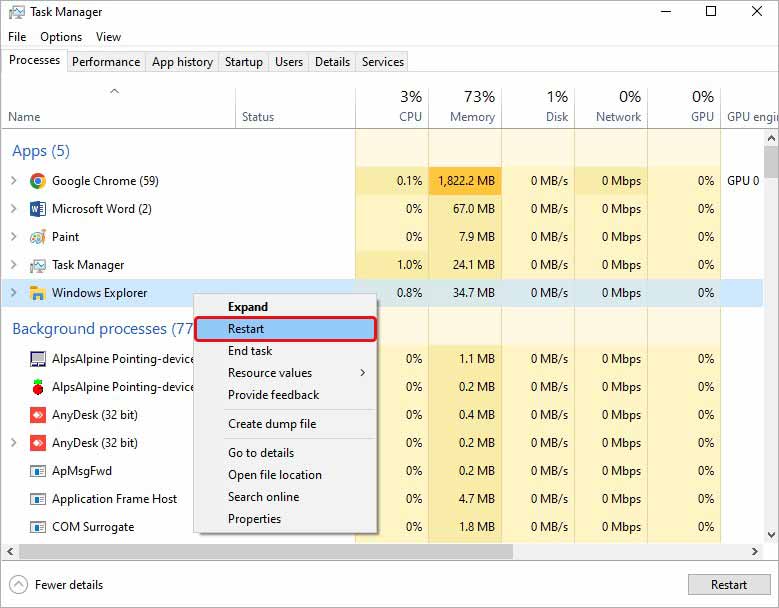
- Select it and right-click on it.
- Click on Restart.
This will restart the File Explorer and should fix the issue on your Windows 10 computer.
Some users reported that switching their method of system shutdown prevented the computer from displaying the DDE Server Window error message. There are simple workarounds that you can employ and avoid this annoying error message.
Workaround 1 – Press WIN + X > Shut down or sign out > Shut down
Workaround 2 – Press WIN + R > Type shutdown /s > OK
Method 3: Disable/Uninstall Third-Party Antivirus
In certain cases, third-party antivirus installed on your system could interfere with the system settings and files thereby causing the DDE Server Window: explorer.exe error message to pop up on the screen.
If you have recently encountered this error message or are frequently seeing it during system shutdown sequence, you can try disabling or uninstalling your antivirus to check if this error message still appears.
Method 4: Disable ‘Automatically Hide Taskbar’ Option
Many users like to hide the taskbar while they are working to have a clean and uninterrupted screen estate. Hence, they enable the ‘Automatically hide the taskbar’ feature. Strangely, this simple setting caused some Windows computers to show the DDE Server Window: explorer.exe error message.
This fix might seem odd but some affected users reported that disabling the ‘Automatically hide the taskbar’ option fixed the DDE Server Window: explorer.exe error. You can try this for yourself by simply following the steps mentioned below –
- Press WIN + I to open Settings.
- Click on Personalization.
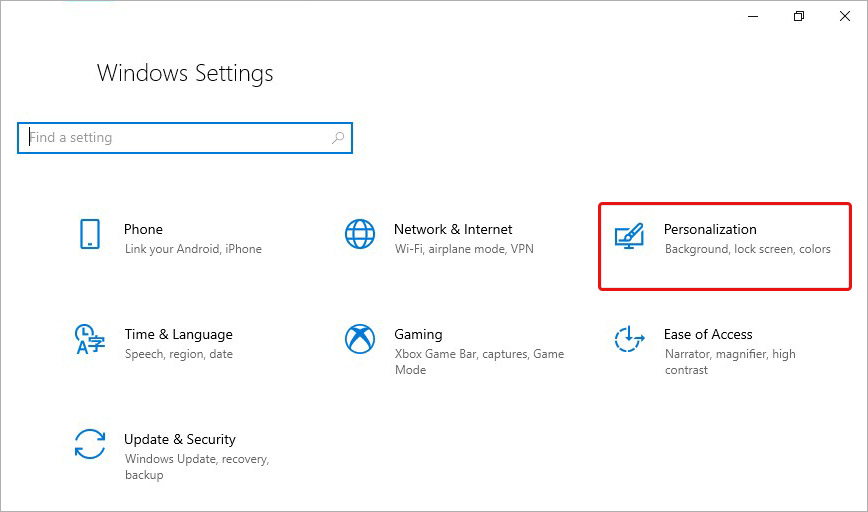
- Click on Taskbar in the left pane.
- Find Automatically hide the taskbar in desktop mode and toggle the switch under it to OFF state.
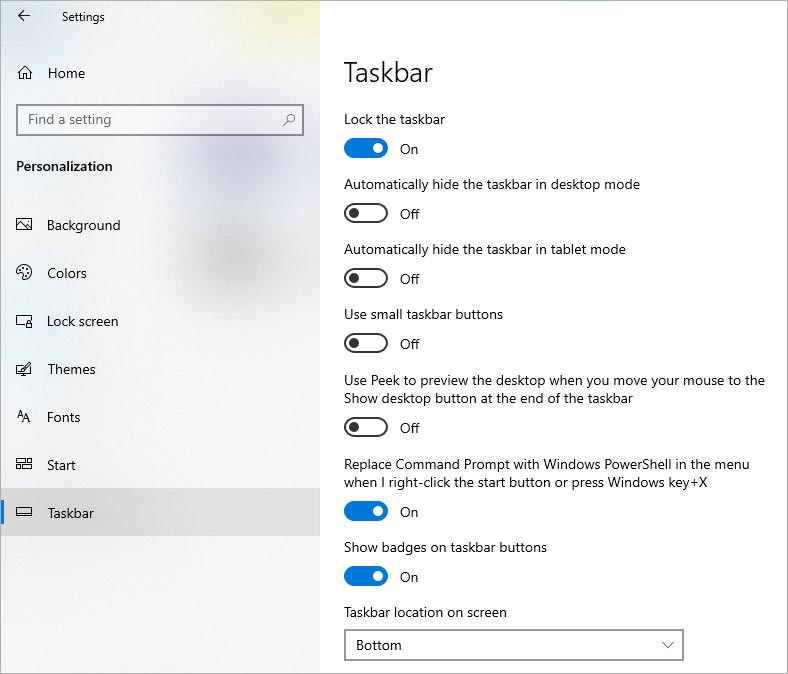
- Close the window and check if this has fixed the issue.
Method 5: Create New User Account
In some rare cases, the DDE Server Window error could be due to an error with your user account. You can try logging into another user account by creating a new one to fix this issue. To do this –
- Press WIN + I to open Settings.
- Click on Accounts.
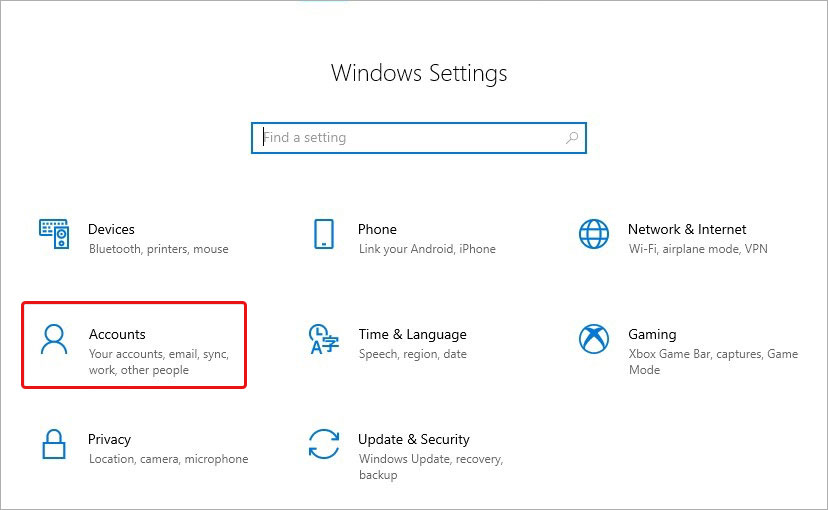
- Click on Other users in the left pane.
- Click on Add someone else to this PC.
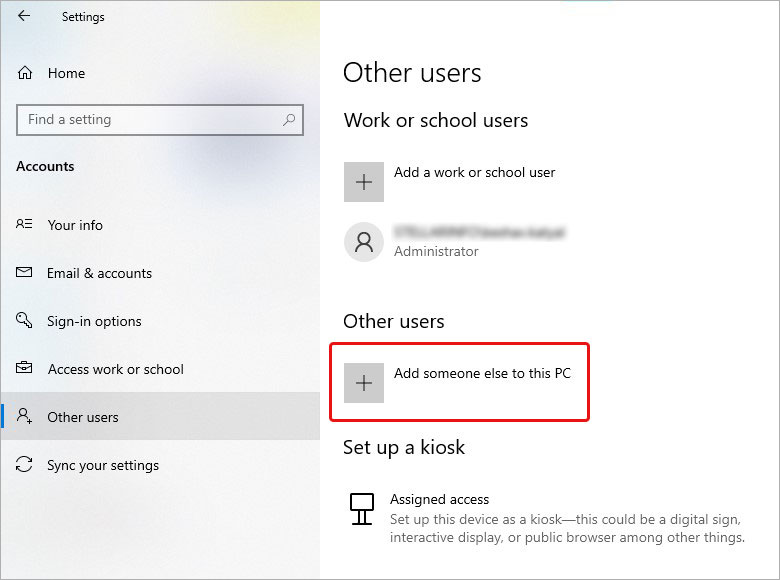
- Click on I don’t have this person’s sign-in information.
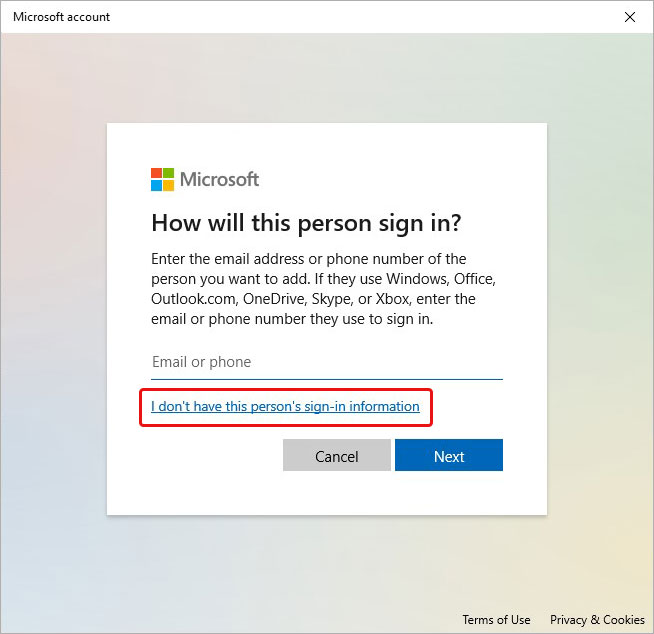
- Click on Add a user without a Microsoft account.
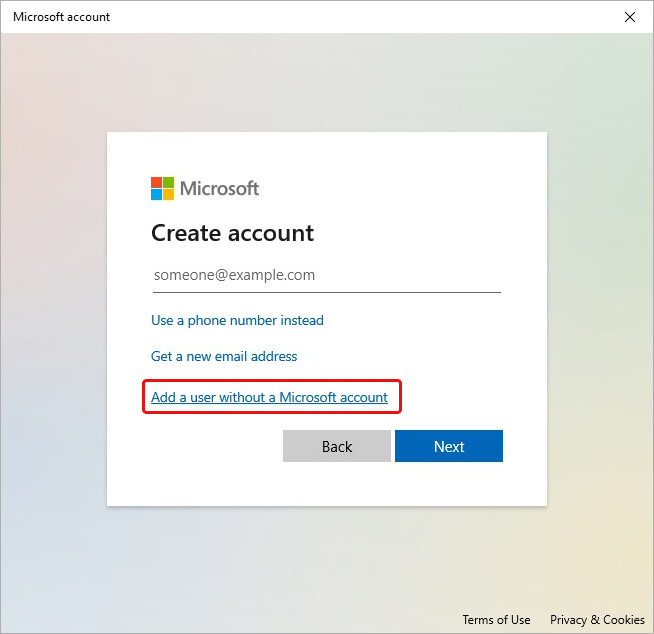
- Enter the details and click on Next to follow further instructions.
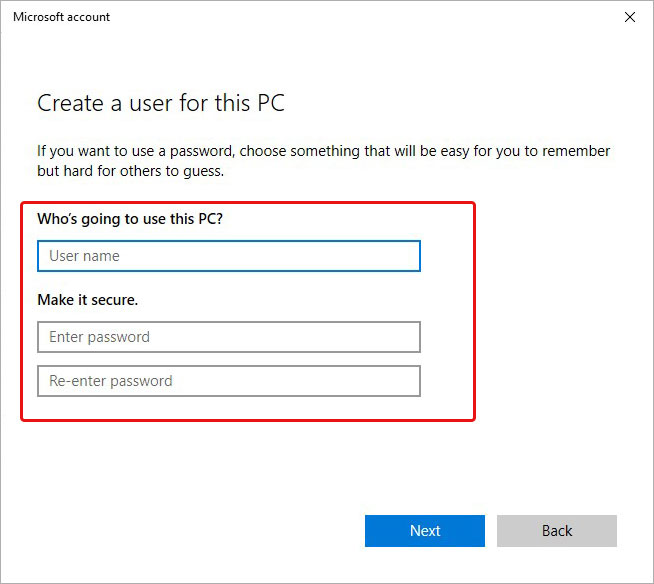
Once the account is created, sign out from your current user account and sign in with the new account to check if this has resolved the issue.
Method 6: Use Registry Editor
When you initiate the shutdown sequence, the computer takes some time to close everything before shutting down the system. However, the DDE Server Window: explorer.exe error message comes right during this time. You can fix this issue by reconfiguring an existing key (WaitToKillServiceTimeout) and creating a new one (AutoEndTask).
To reconfigure the WaitToKillServiceTimeout –
- Press WIN + R, type regedit, and hit Enter.
- Navigate to the following location:
Computer\HKEY_LOCAL_MACHINE\SYSTEM\CurrentControlSet\Control
- Select Control in the left pane.
- Double-click on the WaitToKillServiceTimeout and set the Value data to 2000.
- Click OK and close the window.
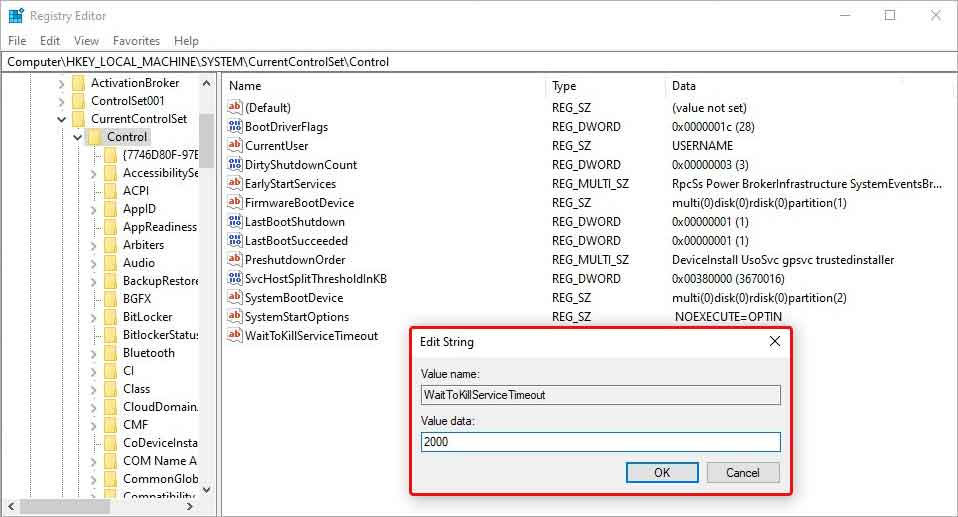
- Shut down your system and check if the issue is fixed.
In case you are still facing the same issue, you can create the AutoEndTask registry.
To create the AutoEndTask registry –
- Open registry editor and navigate to the following location:
Computer\HKEY_CURRENT_USER\Control Panel\Desktop
- Right-click on Desktop, select New, and then String Value.
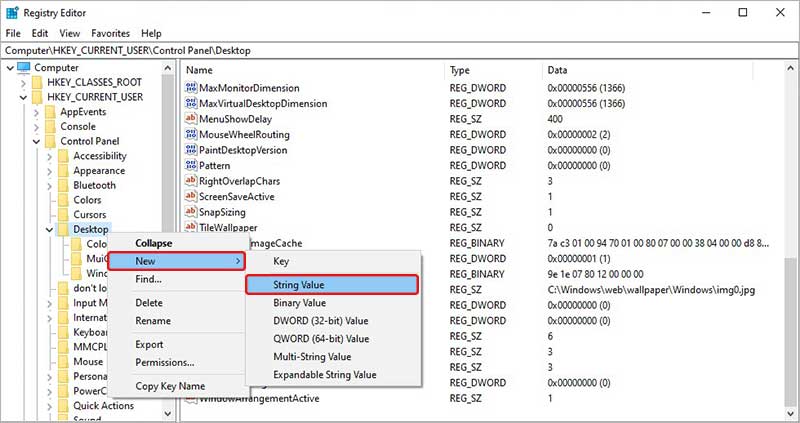
- Rename it to AutoEndTask
- Double-click on the entry and set Value data to 1.
- Click on OK and check if this has resolved your issue.
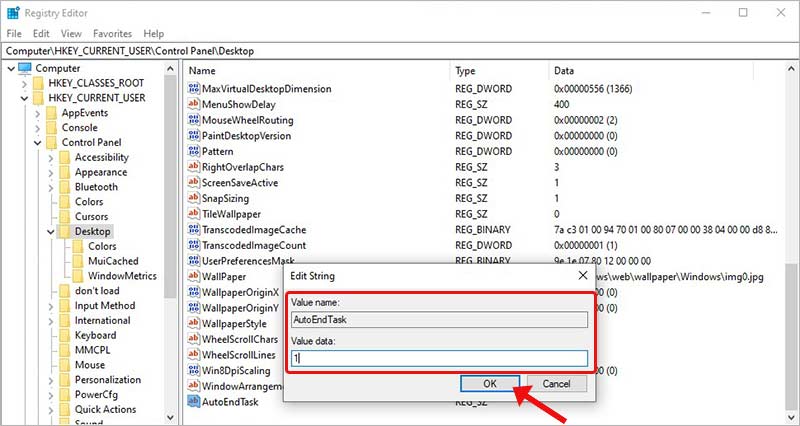
Method 7: Update Windows OS
Windows Updates provide new features along with fixing errors and bugs. Running outdated Windows OS could eventually cause random errors to occur on the computer. Updating your Windows 10 computer to the latest version can eliminate the DDE Server Window error. Follow the steps mentioned below to update device drivers and Windows OS.
To update Windows OS –
- Press WIN + I to open Settings.
- Click on Update & Security.
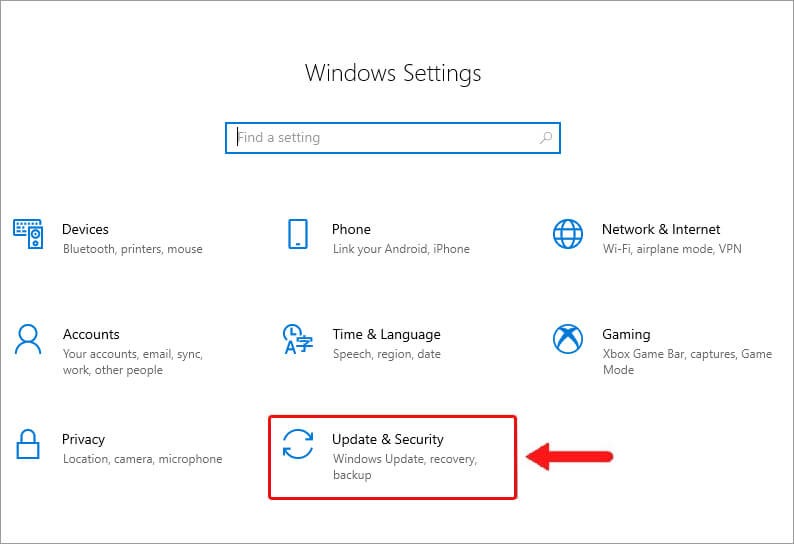
- Click on Windows Update and then Check for updates.
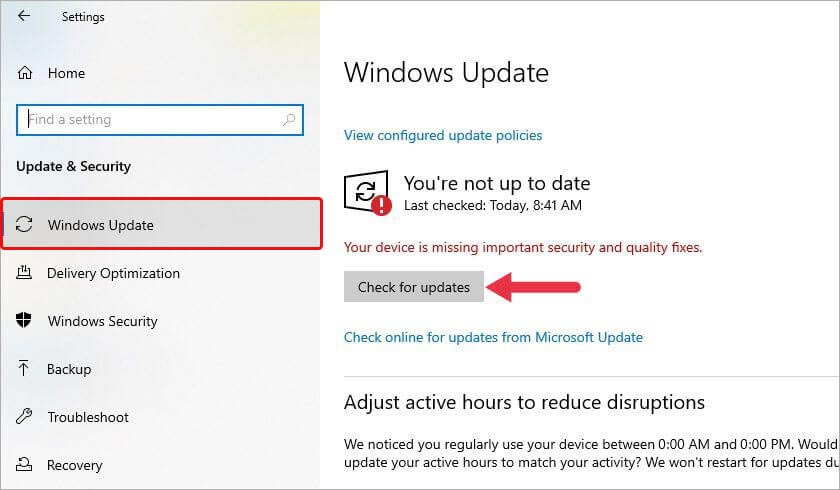
Expert Advice
The above-mentioned methods are sufficient in fixing the DDE Server Window: explorer.exe error. However, such issues are annoying and could lead to improper shutdown. This could cause data loss. In such a scenario, a powerful DIY data recovery software like Stellar Data Recovery Free could help you recover your lost data.
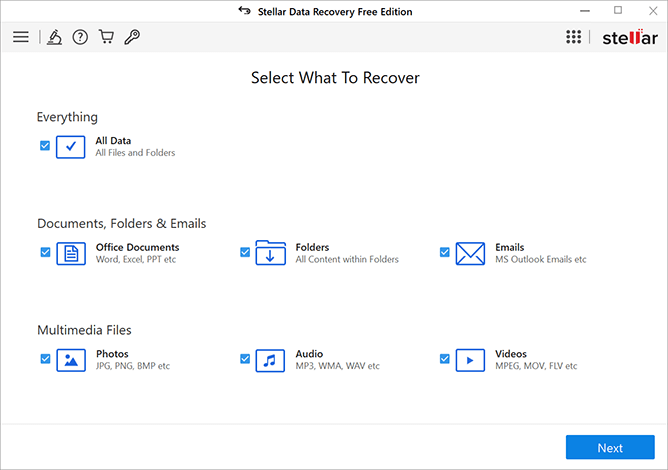
Stellar Data Recovery Free is an advanced data recovery software that allows users to recover up to 1GB of data for free. This software is capable of recovering data from various storage devices like HDDs, SSDs, etc. It can recover data of any file type like photos, videos, documents, PPT, PDF, DOCX, and many more. It can also recover data from formatted, corrupted, and encrypted storage drives.
Conclusion
DDE Server error prevents a system from shutting down. It displays a dialog box with DDE Server Window: explorer.exe – Application error mentioned. In this guide, we learned about this error, discussed the causes and the ways to fix it. We also came across an intelligent data recovery tool, which can be used in case there is data loss due to this error. We hope the solutions mentioned in this guide will provide a resolution.
What is DDE server in Windows 10?
Windows DDE server or Dynamic Data Exchange is a utility that allows Windows applications to exchange information with each other.
What causes DDE server error in Windows 10?
Running outdated Windows OS is said to be the biggest cause behind this error. Other causes as per user reports include third party antivirus and enabling the Automatic hide taskbar option.
Was this article helpful?
YES0
NO




